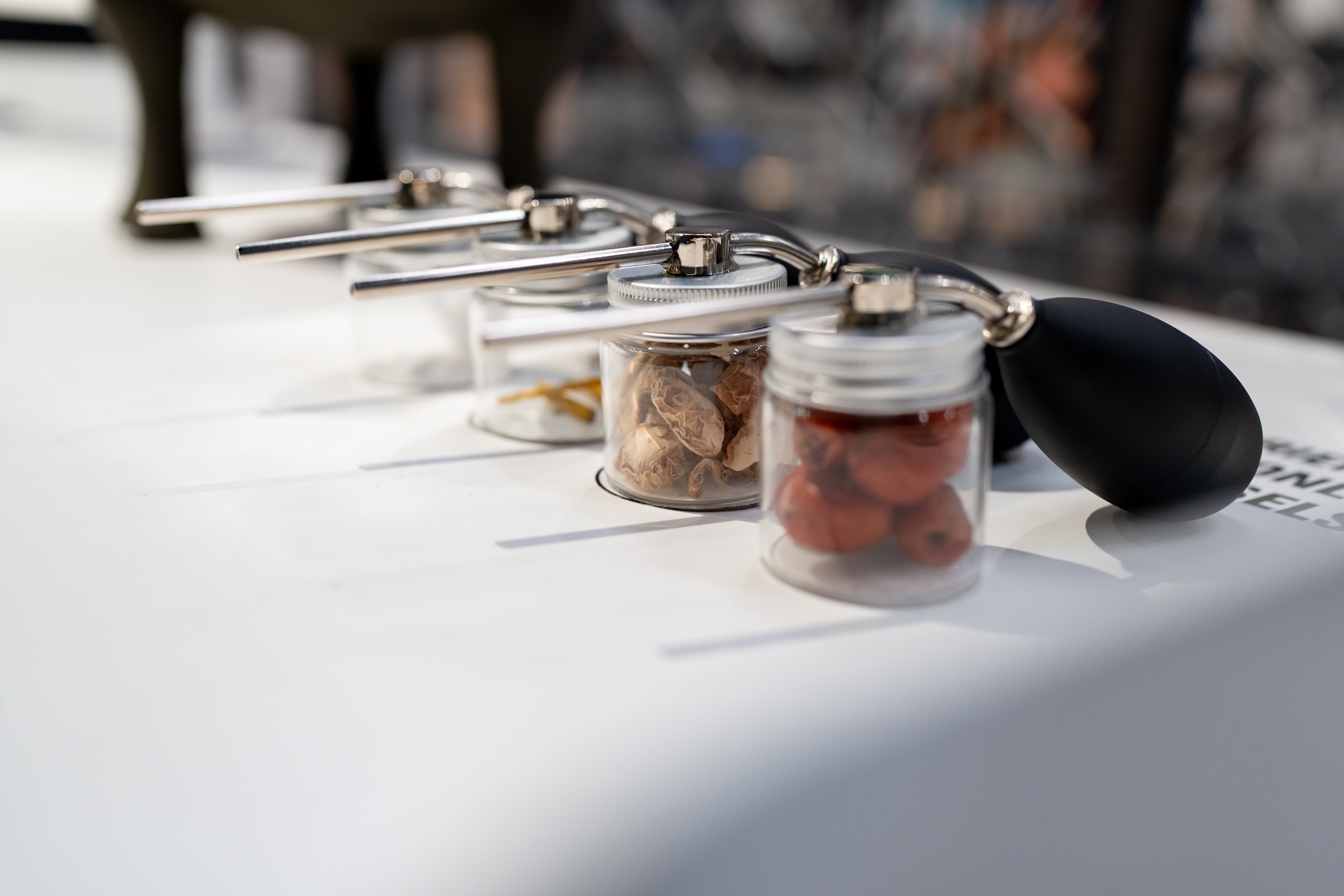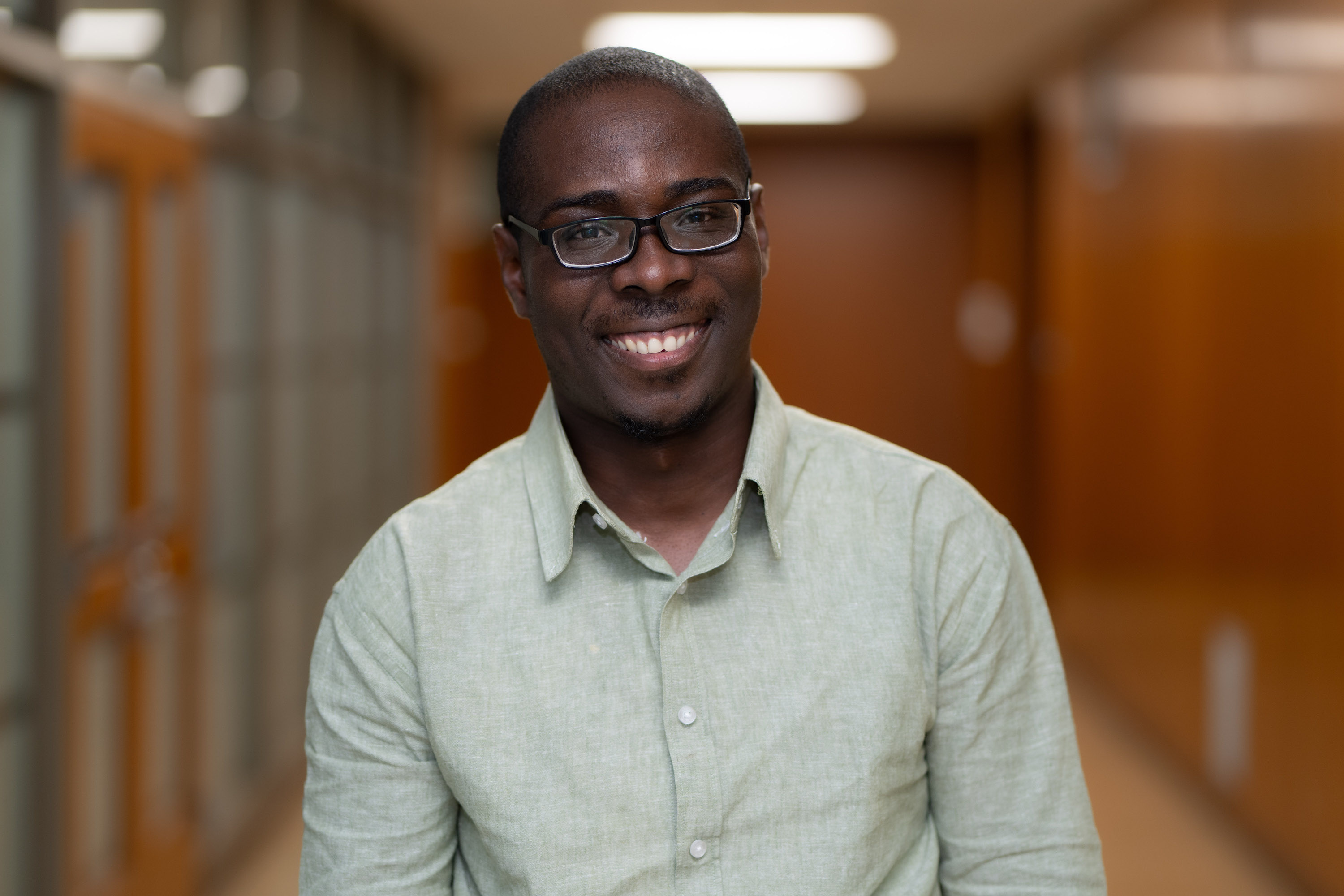
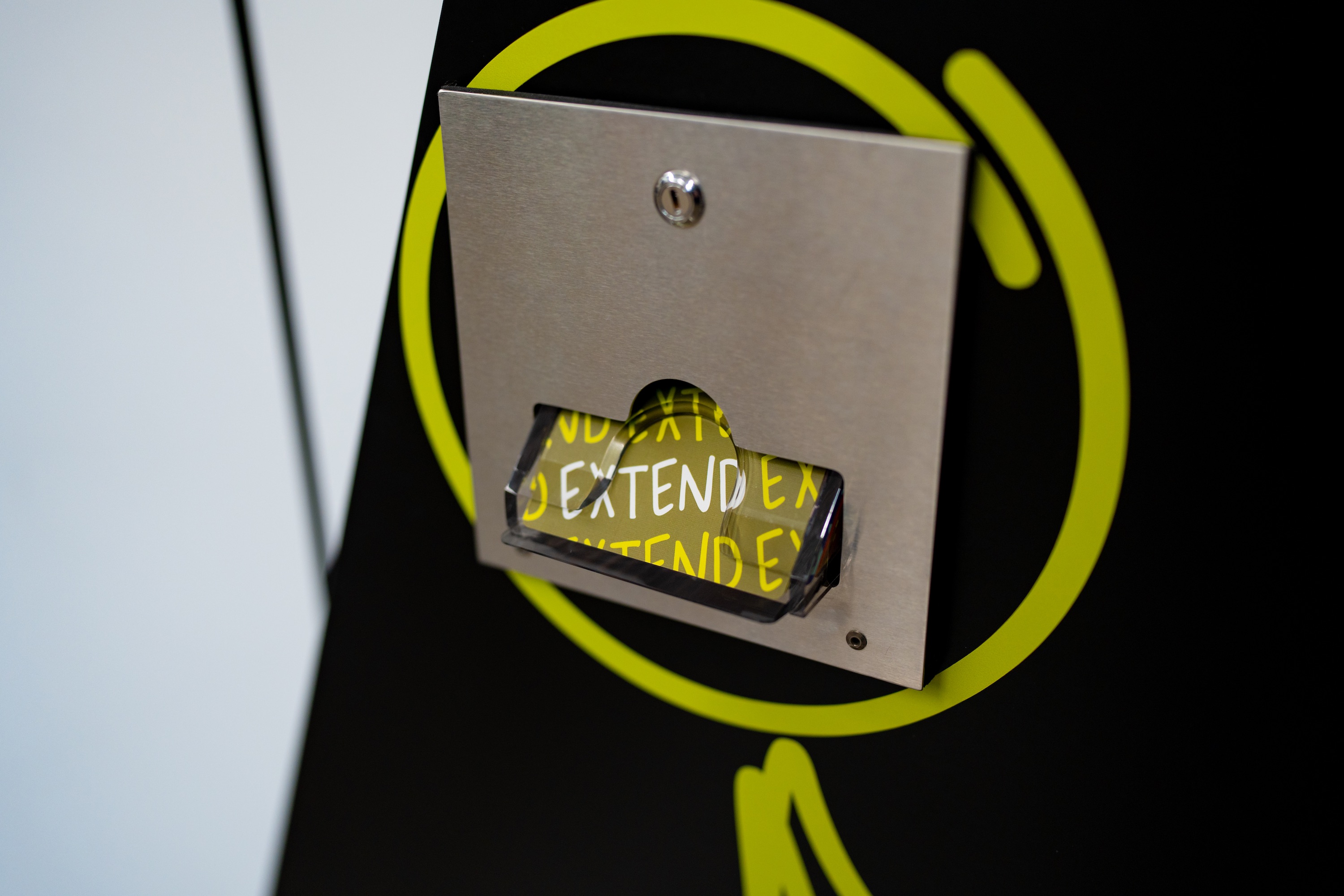
“Core cards” at the entrance of The CORE act as partners in the museum experience, providing prompts and questions related to observing, reflecting, extending and connecting to the works in a more profound way. Photograph by Nick Schrader.
At MSU, the arts support curriculum and research, and The CORE is a perfect case study in their benefits. Word says that the skills associated with object-based learning are transferable across essentially any discipline, and faculty members Leanne Kent and Jiahang Li are already utilizing The CORE’s offerings.
Kent is an assistant professor in the Department of Writing, Rhetoric and Cultures. She teaches courses in the first-year writing program, which nearly all undergraduate students pass through at MSU. A goal of the program is for students to think of writing in terms of inquiry, discovery and communication. To do this, students move through a five-project sequence that centers their own experiences.
“Some people are going to be engineers, some are going to be scientists, some are going to be art historians,” Kent says. “So, we really focus on the writing process.” One of her course’s assignments asks students to inquire into the writing and communication practices of a desired profession.

Leanne Kent. Courtesy photo
After learning about The CORE, Kent saw it as a perfect companion to another of her course’s writing assignments: Students are asked to write about an object in use in a culture they participate in. It could be something as simple as MSU culture and writing about the Rock. Kent brought her classes to The CORE to show them how examining something deeply might help, as Kent says, “discover something new about a group that they are inside of.” Kent says one of the activities led by Kristin McCool, an educator for student engagement and access at the museum — to sketch a sculpture or object — showed students the vast number of details in any one object and how reflection on these details could prompt questions and discovery.
“The idea with this first-year writing course is to equip students with the tools and knowledge to ask the right questions. This way, students will develop self-efficacy to find the answers they’ll need as they go on to engage with a whole range of writing situations,” says Kent.
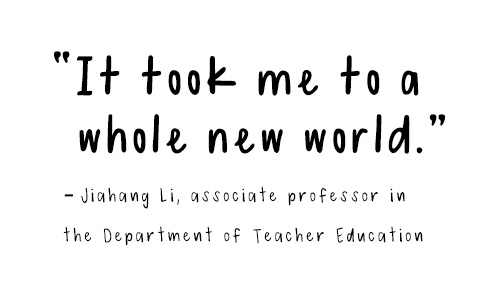
For Li, who hopes to bring different viewpoints to his classrooms, the experience at The CORE was eye-opening. “It took me to a whole new world,” he says.
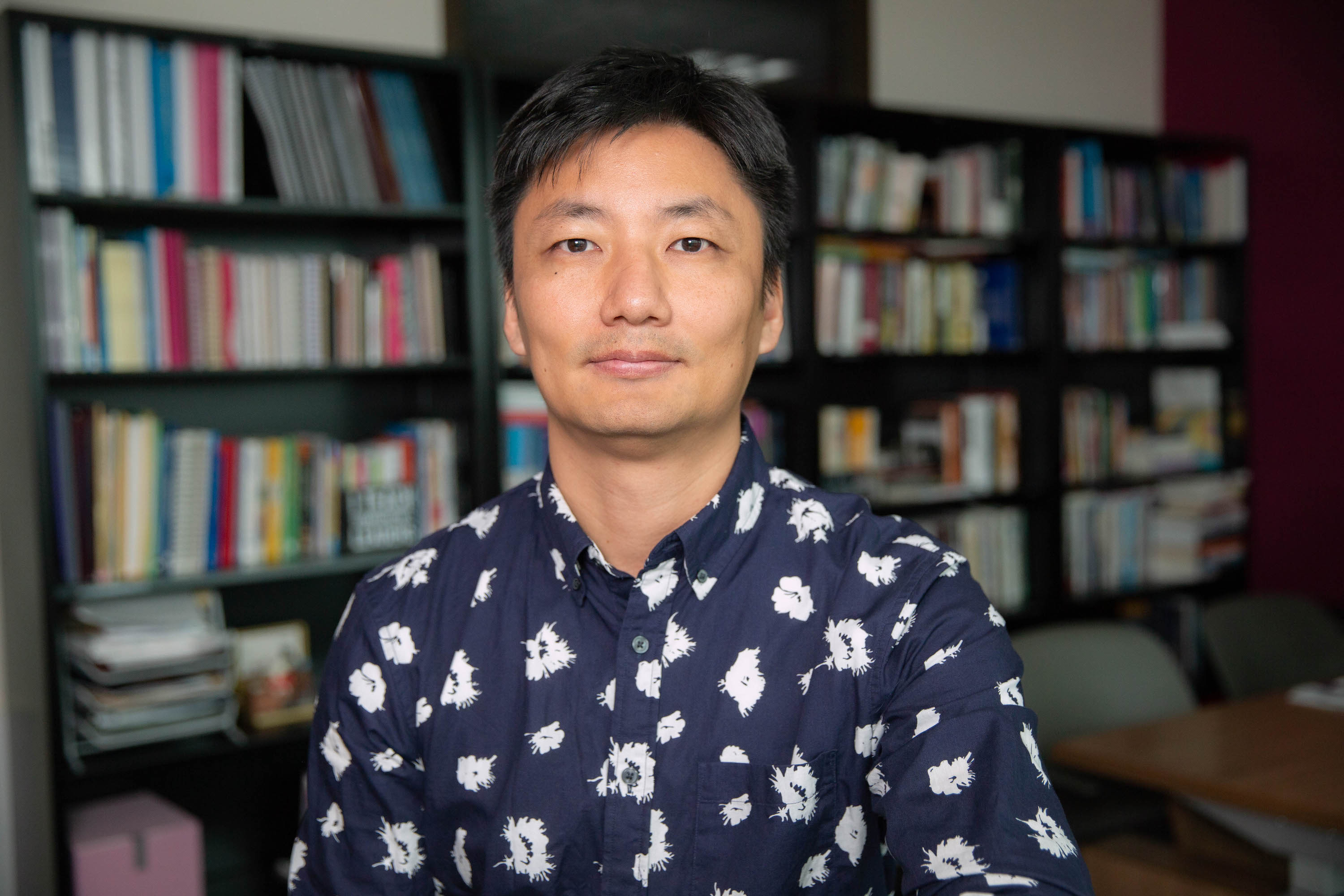
Jiahang Li. Courtesy photo
Li is an associate professor in the Department of Teacher Education, outreach coordinator for the Asian Studies Center and director of the Online Chinese Program in the College of Education. He collaborates with the education team at the MSU Broad Art Museum as part of the Global DEI Teaching Fellowship. A collaboration between the Asian Studies Center, African Studies Center, and the Center for Latin American and Caribbean Studies under the U.S. Department of Education Title VI funding, the fellowship is a program for K-12 teachers to build skills and strategies that broaden students’ understandings of global diversity, equity and inclusion. As a professor in the teacher education department, where he focuses on training world language teachers, his work with the MSU Broad Art Museum has been an asset.
Li leads one of the sections of a course on teaching multilingual learners. Each section of that class, including Li’s, went to The CORE last fall to look at objects that the students could use in the development of a course project. To Li, art is the perfect tool to explore and discuss cultures, encouraging a better understanding of global diversity, equity and inclusion.
“Art is very personal,” Li says. “There's no right or wrong. You can understand from different perspectives, from different angles and you can bring your own experiences and background, as well. I think it’s very unique to the field of education for us to have The CORE and this space that encourages us to look at something from as many angles as possible.”
Like in Li’s research, those personal perspectives and experiences are a desired outcome at The CORE. Sometimes, those personal perspectives can touch even closer to home.


